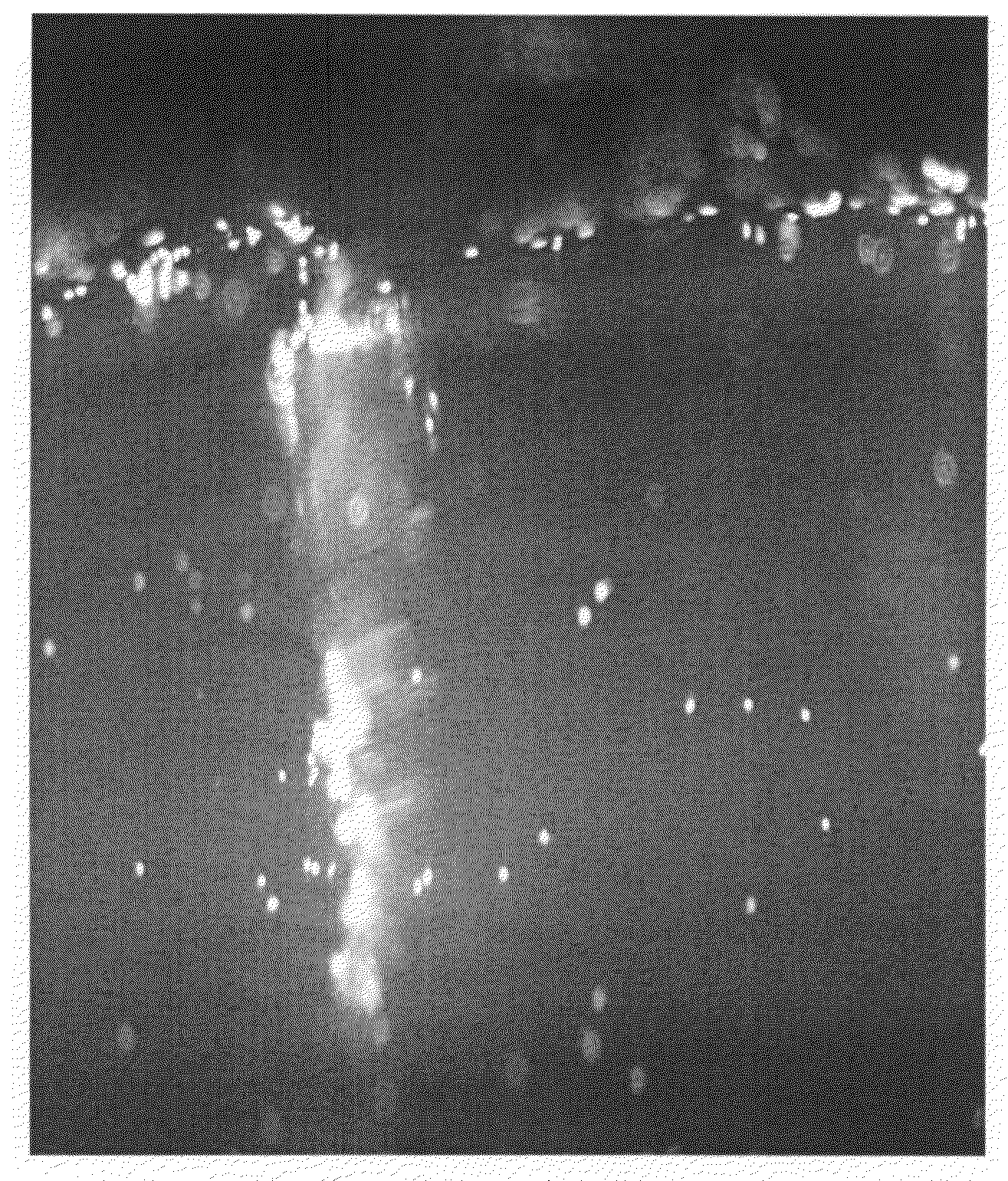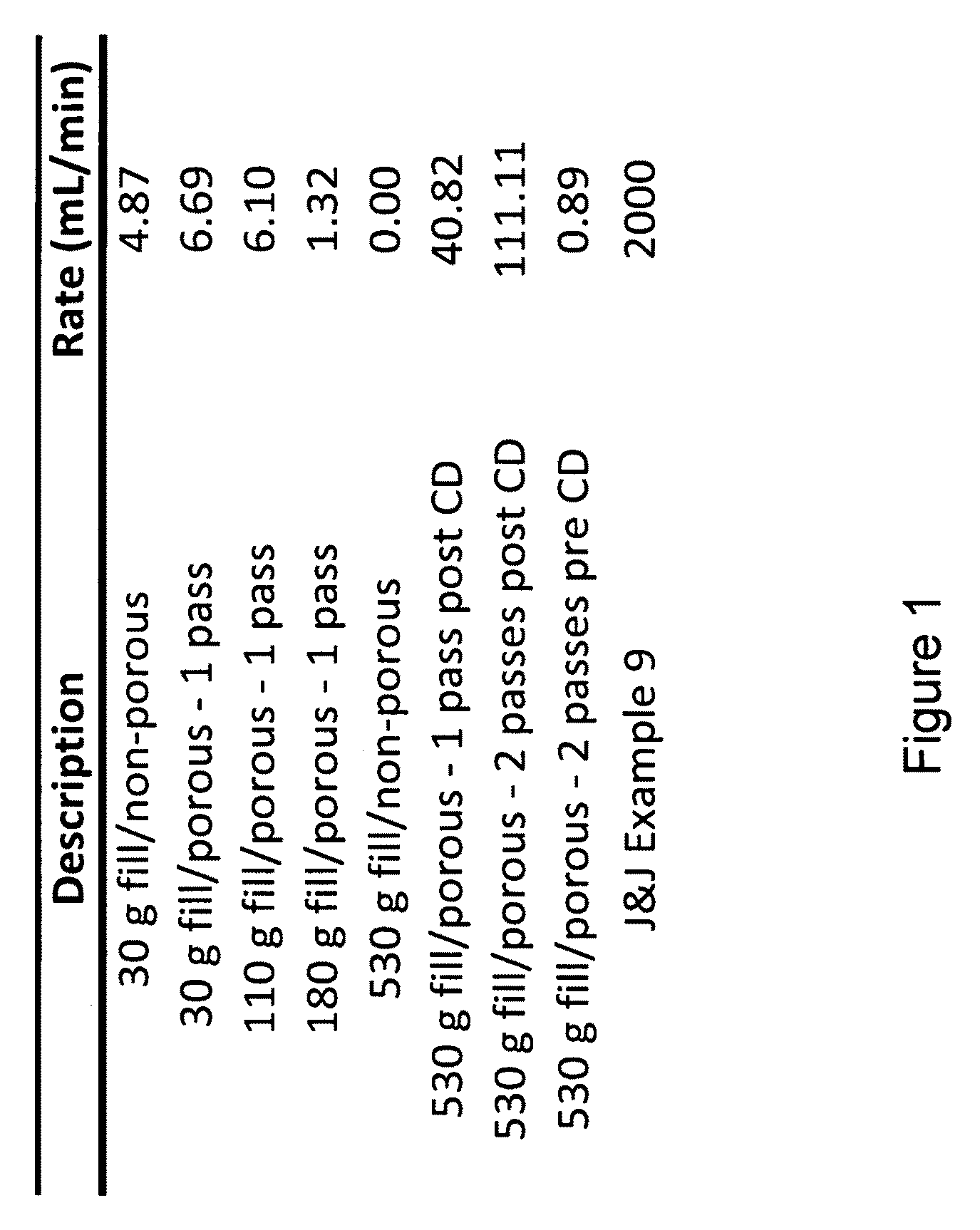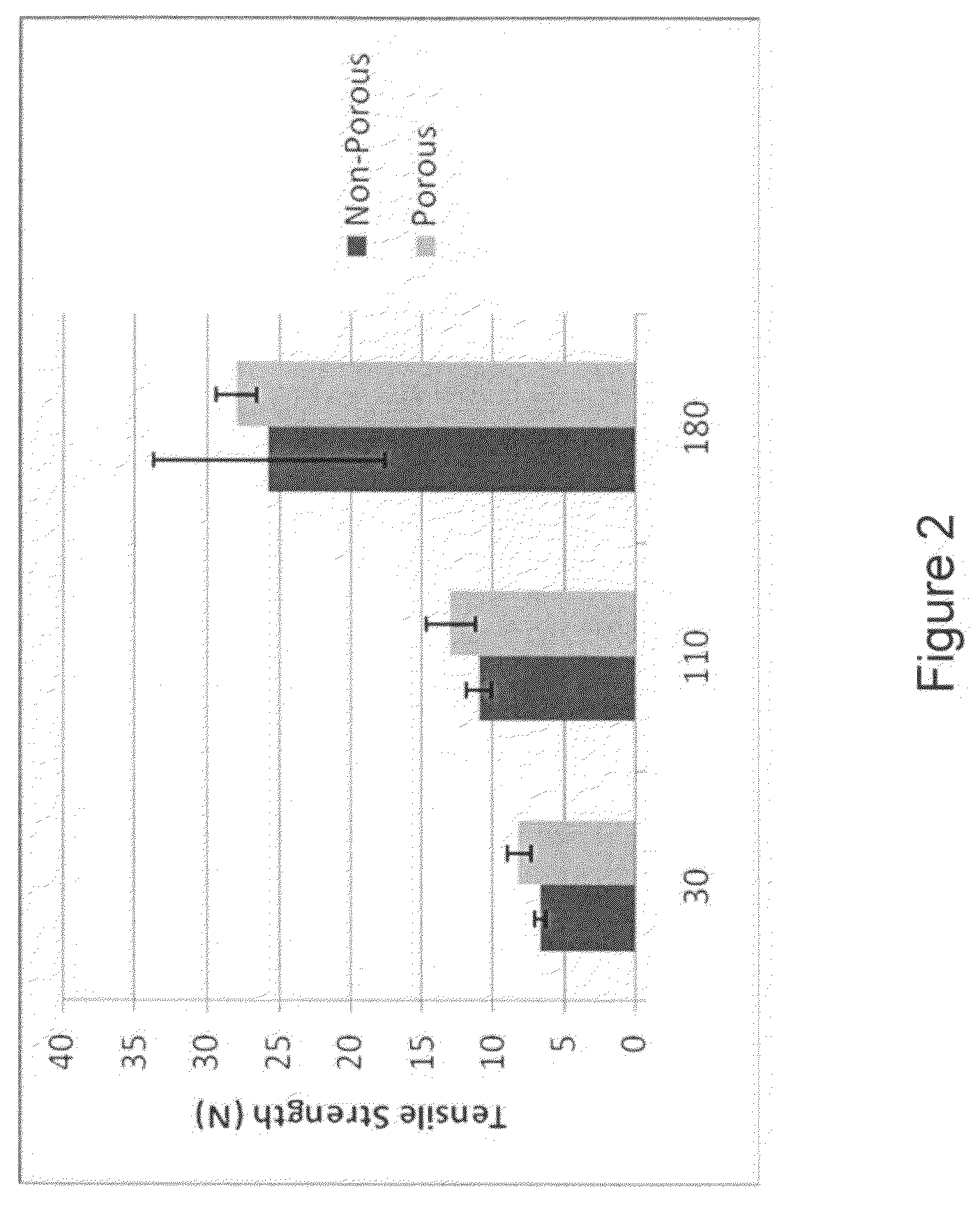Porous structures of microbial-derived cellulose for in vivo implantation
a technology of microbial-derived cellulose and in vivo implantation, which is applied in the field of polysaccharide materials, can solve the problems of insufficient microporosity of microbial cellulose to allow for infiltration of host tissue, the use of microbial-derived cellulose in the medical industry is limited to liquid-loaded pads, and the pores are not over the entire surface of the dressing,
- Summary
- Abstract
- Description
- Claims
- Application Information
AI Technical Summary
Benefits of technology
Problems solved by technology
Method used
Image
Examples
example 1
Manufacture of Implantable Microbial-Derived Cellulose
[0044]This example is directed to a preparation of porous microbial-derived cellulose films produced by A. xylinum within a controlled environment to minimize bioburden (microorganism contamination). From a propagation vessel, sterilized media was inoculated with A. xylinum, filled into bioreactor trays that can be fitted with protrusions from above and below the air liquid interface The size of the protruding pins vary depending on the desired pores and can range from 200 microns to 10 mm. The fill volume ranging 180-550 g, and incubated for 10-35 days depending on the desired pellicle thickness and eventual cellulose density. The pellicles were extracted from the trays and then underwent chemical processing (depyrogenation) in a tank of 8% sodium hydroxide which was heated to about 90° C. to 95° C. for about one hour. The pellicles then underwent a continuous rinse with filtered water until the pH was below 10.0. The material w...
example 2
Permeability Testing
[0046]Samples with fill volumes of 30 g, 110 g, 180 g, and 530 g were prepared according to Example 1. Samples were either left non-porous, or 100-300 μm diameter pores were created using a microneedle array on one side (single sided) or both sides (double sided) of the sample. Furthermore, samples were either left hydrated following the final compression or were further dried in a controlled drying (CD) chamber.
[0047]Additional samples were prepared similarly to those in example 9 of a Johnson & Johnson patent (U.S. Pat. No. 4,788,146), where ⅛ inch diameter rods were introduced into a 250 g growing culture, resulting in square pattern of 7×7, ⅛ inch diameter pores.
[0048]The specimens were placed in a vacuum filter holder and 100 mL of filtered, deionized water was filtered through the sample using a vacuum pump with a maximum vacuum of 21.3 Hg. The time for the water to filter through each sample was recorded and the filtration rate in mL / min was calculated. If...
example 3
Comparison of Mechanical Properties of the Porous and Non Porous Microbial Cellulose
[0049]The mechanical properties of three sample sets with 100-300 μm diameter pores were tested. The first sample set consisted of samples with fill volumes of 30 g, 110 g, and 180 g were prepared according to Example 1. After the final dehydration press, samples remained hydrated and pores were created using a microneedle array. The second set consisted of samples with a fill volume of 530 g prepared according to Example 1. Pores on one side (single sided) or both sides (double sided) were created using a microneedle array either before control drying or after the final rehydration step following drying in a controlled humidity chamber. The third samples set contained porous and non-porous samples prepared as in Example 2 following the Johnson & Johnson patent example 9.
[0050]Tensile Strength Test
[0051]Test specimens were cut from larger pieces (4 cm×5 cm) into 1 cm×4 cm test strips and mounted into...
PUM
| Property | Measurement | Unit |
|---|---|---|
| pore diameter | aaaaa | aaaaa |
| pore diameter | aaaaa | aaaaa |
| pore diameter | aaaaa | aaaaa |
Abstract
Description
Claims
Application Information
 Login to View More
Login to View More - R&D
- Intellectual Property
- Life Sciences
- Materials
- Tech Scout
- Unparalleled Data Quality
- Higher Quality Content
- 60% Fewer Hallucinations
Browse by: Latest US Patents, China's latest patents, Technical Efficacy Thesaurus, Application Domain, Technology Topic, Popular Technical Reports.
© 2025 PatSnap. All rights reserved.Legal|Privacy policy|Modern Slavery Act Transparency Statement|Sitemap|About US| Contact US: help@patsnap.com



